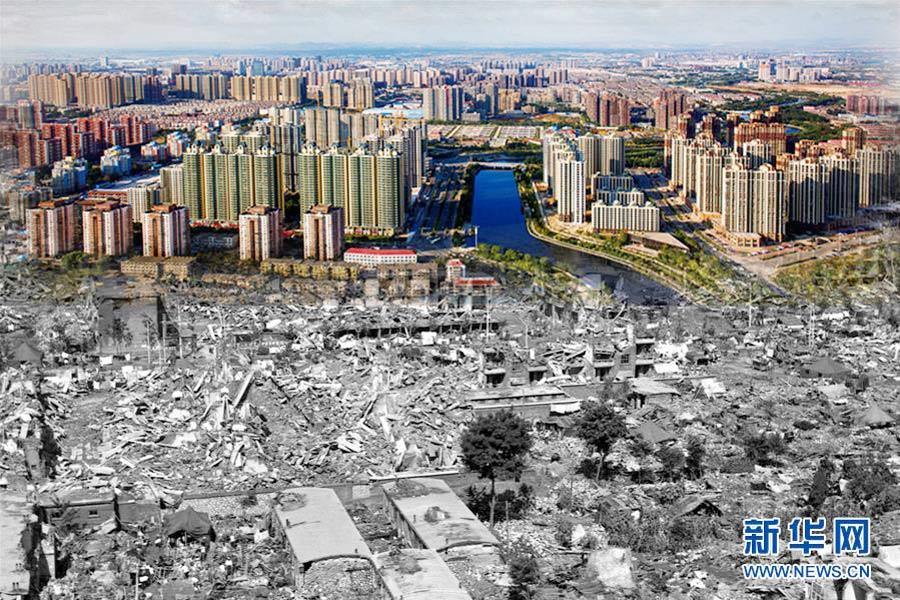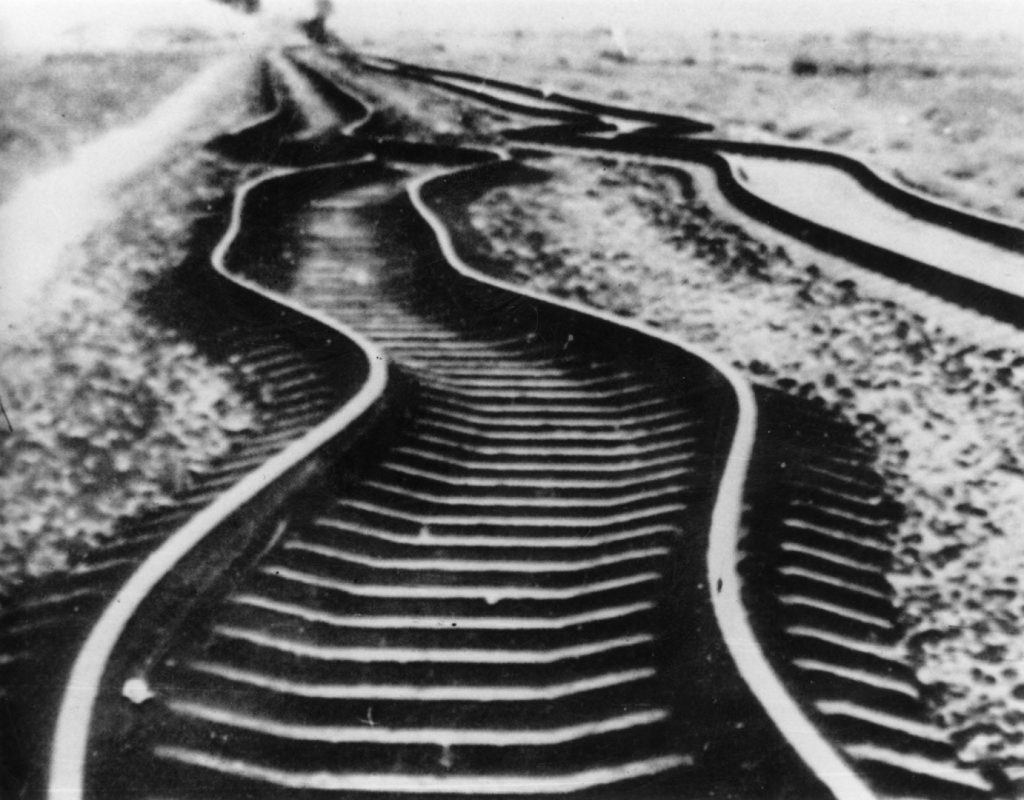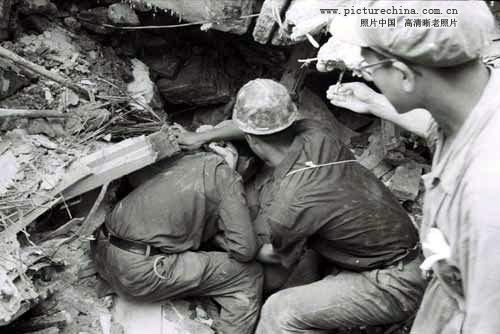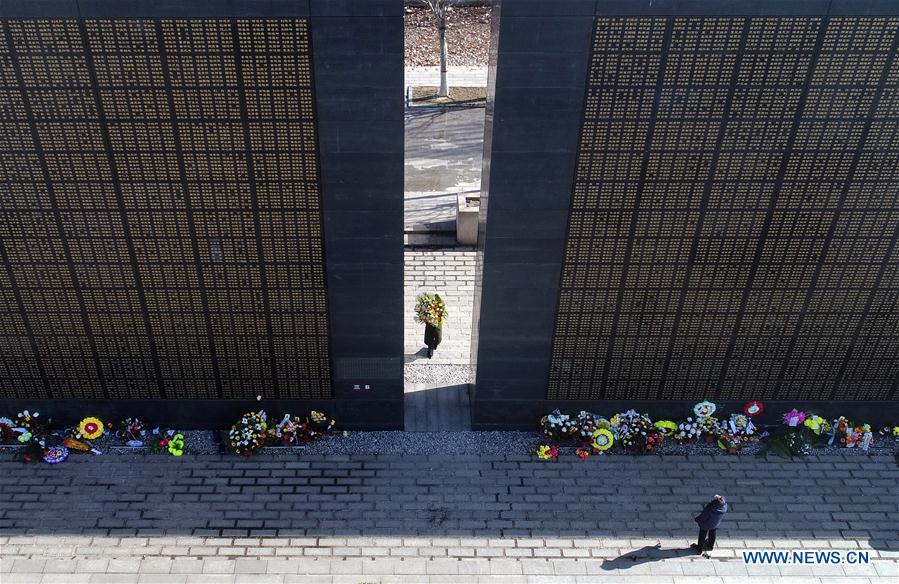<< Read all John Kamm Remembers stories

Amulet
In late July 1976, I found myself strolling the streets of Kyoto with my wife Irene and her sister Pat. It was a warm day, and we had taken the train from Tokyo to Kyoto and headed to the Heian Shrine. The seat of the imperial court of Japan from 794 to 1869, Kyoto was modeled on the ancient Chinese capital of Chang’an and was laid out in accordance with the principles of Feng Shui, the traditional practice of Chinese geomancy. Kyoto has long been considered the cultural capital of Japan, and is home to numerous temples, shrines, and palaces.
The courtyard in front of the shrine was lined with stalls selling amulets. We stopped at a stall displaying hundreds of amulets, colorful pouches meant to ward off all manner of evil spirits and natural disasters. One amulet in particular caught my eye. Dark blue with a hint of white. After settling on a price, I asked Pat to ask the trader what the amulet was meant for. The trader replied that it was meant to protect against earthquakes.
This trip to Kyoto had been a hasty adjustment of plans. Irene and I were meant to be in Hong Kong with my parents, who were traveling across the world for a belated celebration of our nuptials. My parents had been unable to attend our wedding the previous year, when Irene and I had said our vows at the Causeway Bay Marriage Registry in Hong Kong, followed by a traditional Chinese wedding banquet organized by Irene’s family.
Shortly before my parents were to arrive in Hong Kong, however, fate intervened. I was asked by Ambassador Christopher Phillips, president of the National Council for US-China Trade, to join him on a week-long visit to Beijing in late July 1976. At the time, I was the Hong Kong representative of the National Council for US-China Trade, one of three “people-to-people” organizations set up in the wake of Richard Nixon’s February 1972 trip to China.

I agreed to join Ambassador Phillips in Beijing, and Irene and I went about changing the arrangements for my parents’ visit. My parents would meet us in Tokyo, where Irene’s sister Pat and her husband Kenji lived. After a few days in Japan, I would fly to Beijing and my parents would travel to Hong Kong to meet Irene’s family and celebrate our marriage.
First Day in Beijing
On Wednesday, July 21, 1976, Ambassador Phillips joined me at Tokyo’s Haneda Airport, and together we flew to Beijing on the Japan Airlines flight that departed at 9:00 AM. We were met on our arrival at 12:35 PM by American officials from the Liaison Office and Mr. Guo Simian, head of the American and Oceanian Division of the Liaison Department of our host, the China Council for the Promotion of International Trade (CCPIT). (I learned later that Guo was party secretary of the Liaison Department. He was removed after the downfall of the “Gang of Four.”)
We were driven to the Peking Hotel, one of two locations for visiting dignitaries, the other being the Diaoyutai Guest House. After checking in, we took the elevator to the 14th floor and went to our rooms to unpack and prepare ourselves for the welcoming banquet.
Around 5:00 PM, Ambassador Phillips came knocking on my door. He told me that he had just drunk a tall glass of water from the tap, thus violating the number one rule against drinking unboiled water in a Third World country. I admonished him not to do this again, but it was too late. He would pay a heavy price.
The welcoming banquet was hosted by CCPIT Chairman Wang Yaoting at one of Beijing’s Peking duck restaurants. He was joined by Vice Chairman Li Chuan. Over helpings of Peking duck, washed down by shots of Mao Tai—the fiery sorghum-based and high proof liquor—and chased by beer, it dawned on me why Ambassador Phillips had insisted that I join him in Beijing. He was an old-school diplomat, a former deputy ambassador on the United Nations Security Council and Republican state senator in Massachusetts, but he couldn’t drink. By contrast, I was quite familiar with alcoholic beverages, my father having been a whiskey salesman in New Jersey in the 1950s and 1960s.
My capacity was put to the test. I matched Wang Yaoting glass for glass. Wang was one of China’s most accomplished Mao Tai drinkers. Every time we finished a shot, Li Chuan placed a match on the table. A bottle of Mao Tai contains 33 small glasses, each about the size of a shot glass. By the end of the banquet, there were 25 matches on the tablecloth. Such was the start of our visit.
Tensions
China’s domestic political situation and the state of US-China relations, including the trade relationship, were fraught with tensions leading up to my July 1976 visit. After his 1972 trip to China, Nixon and his National Security Advisor Henry Kissinger wanted to have diplomatic relations with both the People’s Republic of China (PRC), whose capital was in Beijing, and the Republic of China, whose capital was in Taipei, Taiwan. Beijing would have none of it, so the United States maintained its embassy in Taipei and the PRC and the United States opened liaison offices in their respective capitals.
In 1976, after Premier Zhou Enlai’s death in January—I attended the funeral on my first visit to Beijing—a large demonstration that honored him and criticized leftist leaders took place on April 5 in Tiananmen Square. The protest was brutally put down. Vice-Premier Deng Xiaoping was blamed for the protest, removed from his government positions, and placed under house arrest. Radical leftists were now firmly in control of the Communist Party and the government it controlled.

Beijing was angered by steps the United States took in 1976 to show support for the Republic of China on Taiwan, with whom the United States maintained diplomatic relations, much to China’s chagrin. They protested Taiwan’s establishment of new consulates in the United States, Vice President Nelson Rockefeller’s attendance at Chiang Kai-shek’s funeral in Taipei, and the setting up of the US-Taiwan Economic Council, several members of which were also members of the National Council for US-China Trade.
Two-way trade between the United States and China dropped sharply in both 1975 and 1976. Radical leftists criticized Deng’s policy of purchasing Western technology, including complete plants, and ended a policy that saw Western brand names sewn into Chinese garments. Purchases of agricultural products dropped to zero in 1976. Beijing was especially incensed by an American company’s drilling for oil in the South China Sea.
The Meetings Begin
On July 22, a day after arriving, Ambassador Phillips and I began our visit in earnest. The next two days called for meetings with our host, the CCPIT, the Ministry of Foreign Affairs, the Bank of China, and most of China’s 12 state-owned foreign trade corporations. The plan was for all meetings to wrap up by July 26, after which Ambassador Phillips would leave for Washington on July 27 and I would travel to Tianjin on July 28 to attend an export fair. The weekend (July 24-25) would be given over to trips to tourist sites—the Great Wall, the Summer Palace, the Temple of Heaven.
Following a slew of expected meetings, our second day in Beijing was capped off by a reception at the American Liaison Office, the body that represented American interests in the absence of an embassy. Prior to the reception, Ambassador Tom Gates welcomed Ambassador Phillips to his office. He spoke of a recent meeting with Zhang Chunqiao, considered the leftists’ principal theoretician. It was an unhappy meeting, with Zhang issuing crude threats of what China would do if the United States did not sever all ties with Taiwan. “There will be big trouble,” Ambassador Gates remarked, “if this guy ever takes control of China’s government.”
Two meetings on July 23 stand out: one with the China National Chemicals Import and Export Corporation (Sinochem) and one with the Bank of China. Both were unpleasant, but unpleasant in different and telling ways.
We met with senior Sinochem managers in their office. Once I knew I would be traveling to Beijing with Ambassador Phillips, colleagues in the Washington office managed to wrangle an invitation for the China Chemicals and Pharmaceuticals Special Fair to be held in Tianjin from July 27 to August 19, 1976. I had already attended three mini-fairs thus far in 1976.
I thanked Sinochem’s deputy managing director, but he ignored me, thinking perhaps that I was too junior to warrant an acknowledgement. He only said that the corporation expects a full report from the National Council on the market for chemicals in the United States at the event, a market about which I knew very little. Through Guo Simian, I was given an invitation to the fair. The CCPIT helped me buy a train ticket departing Beijing for Tangshan/Tianjin at 7:32 AM Beijing time on July 28.
I asked this official what he could tell the National Council about Sinochem’s Petroleum Department. He became hostile. “Why do you want to know?” he asked, suggesting that this was secret information. Ambassador Phillips stepped in and said that the council had recently set up a petroleum committee and its members wanted to establish contact with their counterparts in China. The official gave a curt answer to the effect that they should write a letter to Sinochem’s head office requesting that the letter be transferred to the Petroleum Department.
After blasting American companies for exploring for oil in China’s “sovereign territory,” the deputy managing director showed us the door.
Our meeting with the Bank of China was the last official meeting of the trip. It took place in the bank’s headquarters just off Tiananmen Square. We were greeted by an urbane senior manager in a starched Mao suit. After an exchange of pleasantries, the gentleman adopted a stern demeanor. He had heard about the establishment of the “so-called” US-Taiwan Economic Council and had noticed that several American banks that were members of the National Council for US-China Trade had joined this organization. “This is unacceptable,” he intoned. “There will be consequences for them. Your own Council might pay a price as well.”
Ambassador Phillips took these threats calmly, with aplomb, making the point that the National Council could not control the activities of its members.
A Visit to the Subway and the Hospital
After the meeting with the Bank of China, Mr. Guo took us to a nearby Beijing subway station. The first subway lines were constructed in 1969, but the system was frequently closed for technical and political reasons. For several years it was operated by the People’s Liberation Army, but in 1976 it was returned to civilian control and foreign dignitaries were sometimes invited to have a look. The subway had both civilian and military uses. In the event of a nuclear attack, civilians would shelter there.

We took an escalator down to the platform. Few passengers were waiting. A train pulled up and we boarded. Sitting in our car were several passengers, including a young mother whose child exploded in tears when we said hello. There was also an elderly peasant from the countryside, looking a bit worse for the wear. Mr. Guo approached him and told him to push off. The peasant ignored him, and given the tenor of the times, Mr. Guo did not press the point. The three of us alighted at the next stop.
When we made it to the street, Ambassador Phillips told Guo and me that he wasn’t feeling well. We went to a hospital and Phillips was given a battery of tests. Exhausted, we returned to the Peking Hotel. At midnight, we were roused from our sleep by calls from the lobby. Ambassador Phillips had been diagnosed with dysentery and a rare salmonella infection resistant to antibiotics.
With two CCPIT officials, we headed for the First Infectious Diseases Hospital where Phillips was given a private room. Dr. Zhang Dongbo, one of China’s top infectious diseases specialists, arrived and declared he would be in charge of the ambassador’s treatment. He would spend sleepless nights looking after Phillips.
Over the next three days I visited Ambassador Phillips on several occasions, sometimes accompanied by a member of the Liaison Office, sometimes accompanied by Guo Simian. Phillips seemed comfortable and in good spirits.
Wandering About Beijing
That left plenty of time for me to walk around Beijing. I had visited Beijing twice earlier in 1976, and I had identified several places of interest including bookstores and the large Beijing Department Store on Wangfujing. The department store offered made-in-China products with one exception: Swiss watches, which carried a hefty price tag. The Xinhua Bookstore had an impressive display of “Little Red Books” – quotations of Chairman Mao Zedong – laid out beneath the chairman’s portrait. Further down the street were a couple of second-hand bookstores, where I spent happy hours.
In the evening I would go to dinner with American businesspeople who happened to be in Beijing. We would meet in the lobby of the hotel. I was armed with tips of restaurants. One evening we ate curries and breads at the Pakistani Restaurant on the top floor of the Hua Qiao Hotel. The next evening we went to the Minzu Hotel’s restaurant, famous for its spicy dandan noodles.
Finally, on the evening of July 27, I joined two New York garments buyers for a meal at the Moscow Restaurant on the west side of the Beijing Exhibition Hall, a massive Stalinist structure with halls and theaters and a great tower that could have been airlifted out of Moscow.

The restaurant was mostly empty, so we settled down at a small table and ordered Russian dishes from the menu. The restaurant did not have a wine list, but they sported a cellar full of Russian vodka. The vodka had been shipped to China under the 1956 barter trade agreement between the Soviet Union and China. It was very cheap, and very good. We consumed a bottle and then some. We happily returned to the Peking Hotel for what I hoped would be a good night’s sleep.

The Quake Strikes
In the early morning hours of July 28, 1976, I lay awake in my room on the 14th floor of the Peking Hotel. It was a hot, humid evening, and the windows were open an inch or so for fresh air. I was unable to sleep, worried about what I would say when asked to give a report on the chemicals market in the United States after I arrived in Tianjin.
Suddenly, at 3:42 AM, my bed began to heave violently up and down. This lasted around 20 seconds. Then, the swaying, like a pendulum, began, east to west. The windows flew open as much as they could, the ceiling cracked, and the bed slid across the room, first in one direction, then in the other. On each swing of the pendulum, the hotel, by now creaking and moaning, tilted more and more to the point that I thought the next would be the building’s last. But when it reached the apogee, the pendulum paused and gradually settled down, stroke by stroke, until the building came to rest. The violent shaking and swinging together lasted around 80 seconds.
The quake had hit Tangshan, a city 68 miles east of Beijing. It was rated a magnitude 7.5 quake (some estimates are higher) and it caused massive damage to large parts of Hebei Province, Tianjin, and Beijing. The official death toll was put at 242,000 people, though several estimates are much higher, making it one of the greatest natural disasters in history. Thousands of miners were entombed in the underground coal mines around Tangshan, China’s principal source of energy.
I jumped out of bed and threw on my clothes, but I couldn’t find my shoes. I went to the window and looked out over the neighborhoods, made up of a maze of hutong, to the north of the hotel. Children were crying, dogs were barking. On the horizon I made out explosions that I later found out were collapsing power stations. There was an eerie green hue to the early morning sky. I feared, for an instant, that the Soviets had carried out an attack on Beijing.
I decided not to look for my shoes any longer. I exited my room to pandemonium in the hall. Staff attendants were directing people to take the stairs down to the ground floor. People were nervous and excited, and some were nauseous, others expectorating after clearing their throats. It wasn’t long before my feet were filthy with spittle and dirt.

We poured out onto Chang’an Dajie, Beijing’s main street. The city was coming to life. Trucks full of watermelons were barreling down the streets. Residents of nearby hutong began building makeshift street-side structures from pipes, plastic sheets, mats, and tarpaulin. These elaborate structures were to stay in place for more than a year.
Determined to wash my feet, I went back into the hotel. The lobby was cloaked in dust, and staff attendants were inspecting damage with flashlights. No one stopped me, so I took the still operating elevator back to my room on the 14th floor and immediately turned on the tap. Water! I washed myself the best I could and then lay down on my bed where I fell into a deep sleep.
Shortly after 7 AM, I was awakened by the phone. It was Guo Simian. “Mr. Kamm,” he said. “Last night there was an earthquake.”
“I know, Mr. Guo.” He told me to come down to the lobby.
As soon as I saw him, I asked him if there had been damage and casualties. He replied, “No, nothing serious. A few damaged buildings. You can take a train to Tianjin later today.” After his reassurances, he disappeared.
An officer of the Liaison Office stopped by to check on us, I asked him to call my wife in Hong Kong, letting her know I was okay. Not long after this call, my mother, who was in Hawaii, called Irene’s brother who let her know I was safe.
The Party Speaks
Mr. Guo returned in the late afternoon. He called his charges together and announced that the Standing Committee of the Political Bureau of the Communist Party of China had met and determined that there had in fact been an earthquake earlier that day. Foreigners should leave Beijing as soon as possible. If assistance was required, the relevant departments would do what they could to provide it.
I told Guo that I would stay until I was sure that Ambassador Phillips was safely evacuated. We agreed to go to the Number One Infectious Disease Hospital the next morning.
We found Phillips in a tent on the hospital grounds. The tent was stifling hot, but he was stoic, nary a complaint. Sharing the tent were three Laotian soldiers who had been bombed by US forces and who were being treated for hepatitis. The daughter of the Tanzanian ambassador was also housed in the tent. While we were there, trucks with casualties from Tangshan began to arrive.

Returning to the hotel, I went to the restaurant for lunch. Suddenly an aftershock rattled the windows, making them look like flowing water. I later learned that this aftershock was measured as 7.1 on the Richter scale. I decided to sleep on the ground floor, accompanied by three CCPIT officials. I returned to my room for the next two nights.
On July 29, I ventured out of the hotel to survey the damage. The building with the most damage was the department store I had just visited. The southeast corner of the building had crumbled, and bricks were strewn everywhere.
Mandate of Heaven
The foreign missions organized evacuation flights, and Ambassador Phillips departed on one that left on July 30. I decided to take a flight to Guangzhou on July 31, thence by train to Hong Kong. On checking out, I was told that there were only 50 foreign guests left in the hotel, down from 300 on July 28.
On the CAAC flight to Guangzhou I was seated next to a survivor of the quake, a Frenchman who had been in Tangshan on a friendship tour. His wife had been killed. When he went to use the washroom, the Chinese official accompanying him insisted that the man’s hair had turned white as a result of what he had experienced.

Upon arrival in Guangzhou, I went to the Dong Fang Hotel, where I had stayed at the trade fairs, and took a room. The previous four days had taken a toll on my mental state. I had grown accustomed to uncertainty, to not knowing if the ground beneath me was solid. Gradually, the tension eased, leaving me with a splitting migraine headache.
The next morning, I took the train down to Lo Wu, where I crossed the wooden railway bridge and entered Hong Kong. I boarded the Kowloon-Canton Railway where I was met by a gaggle of local journalists eager to hear what I had experienced. I was featured on the evening news and wrote an op-ed for the Ta Kung Pao, a local left-wing newspaper. The op-ed compared the earthquake to the death of Premier Zhou Enlai. I later learned that the leftist leadership in Shanghai was greatly angered by what I had written. They refused to let it run in the local edition of Reference News.
I also gave an interview to the Washington Post’s Jay Matthews. The story ran in the paper on August 2, 1976.
Six weeks after the earthquake, Mao Zedong died, and four weeks later Hua Guofeng, the Communist Party’s new chairman, carried out the arrest of the “Gang of Four,” one of whose members was Zhang Chunqiao, the man Tom Gates had warned us about. In traditional Chinese belief, natural disasters presage the end of an emperor’s reign. Thus, in the eyes of many Chinese, the North China Earthquake of July 28, 1976 was a sign that Emperor Mao was losing the Mandate of Heaven.
Listen to the Encounters with China podcast.
Subscribe to receive notifications about new episodes.
Read all John Kamm Remembers stories.
